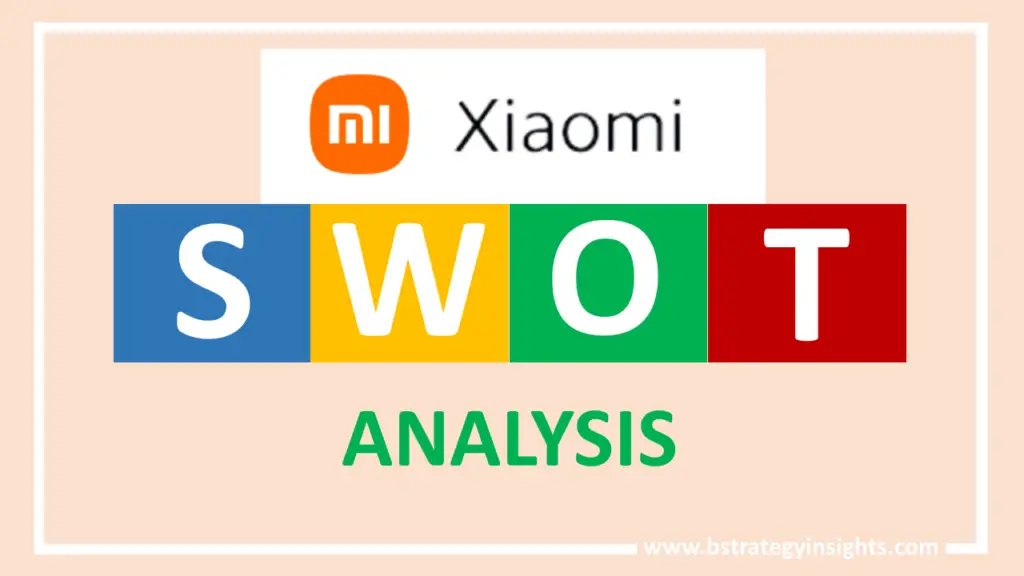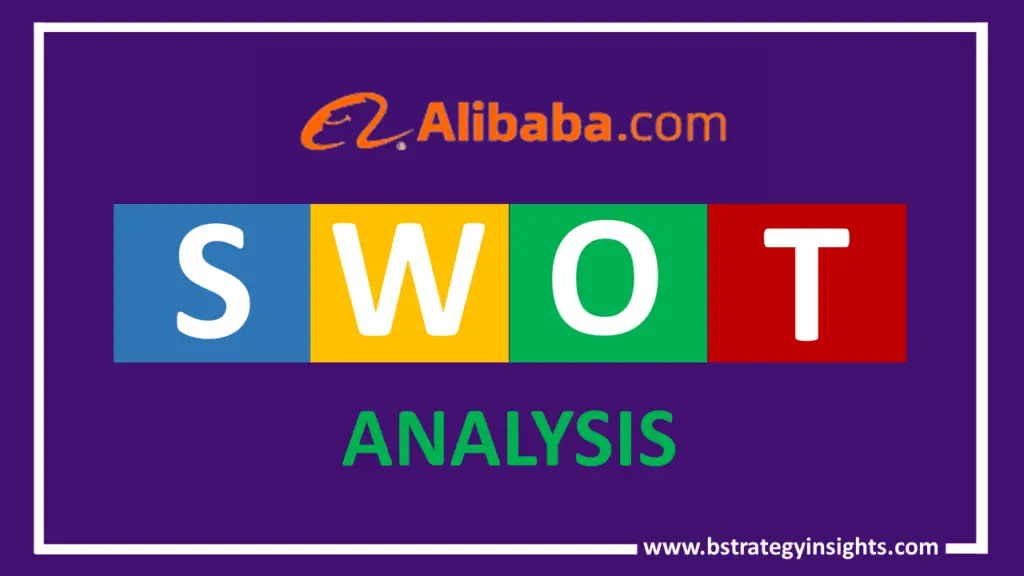
Xiaomi is the 2nd largest technology company in the world, even when its branding is weak in the western world. The brand has witnessed unprecedented and rapid growth in recent years to the extent that it has superseded major brands in the industry in sales to come on top of competitors in sales. The brand competes against tech giants like Microsoft, Apple, and Google.
This article looks at the Strengths, Weaknesses, opportunities, and threats of Xiaomi. So let get started!
Xiaomi Inc – At a Glance
| Name | Xiaomi Inc. |
| Website | www.mi.com |
| Founders | Lei Jun |
| Chief Executive Officer (C.E.O.) | Will Shu |
| Headquarters | Haidian District, Beijing, China |
| Type of Corporation | Public |
| Year Founded | 6 April 2010 |
| Revenues | US$43.36 billion (2020) |
| Key Products/Services | Mobile phones, IoT products |
| Key Competitors | Apple, Samsung |
Strengths of Xiaomi
Competitive Pricing
Xiaomi sells its electronic devices and smartphones products at extremely affordable rates. This pricing model enables the brand to access price-sensitive niches in developing countries. Additionally, competitive pricing gives the brand a market penetration strategy to penetration un-entered emerging markets where smartphones were too expensive for consumers.
Xiaomi has made phenomenal sales in India and China, where the price is a critical factor for buyers in determining their purchasing decisions. Such buyers were unable to buy from premium brands like Apple and Samsung.
Strong Product
Xiaomi is well known for its high-quality products. Reviews online from both critics and consumers testify of the value one can get from buying Xiaomi’s products. Xiaomi injects quality into every component of the product to achieve powerful specifications for its products.
For instance, the brand’s camera quality is great with very high resolution. Quality standards are adhered to right from the start of manufacturing to the end of the process.
Strong Sales and Profits
Xiaomi toppled Samsung and Apple with a growth in revenues of 64% to reach this top position. The brand was position two globally in the 2nd quarter in sales. It registered sales of $13.56 billion and $1.28 billion. Cumulatively, the brand has sold 800 million smartphones right from its inception in 2011.
Strong Market Share
While the brand was formed and released its first smartphone in 2011, by 2014, the brand had grown to grab the largest market share in China. The brand went on to develop a diversified portfolio of smartphones and electronics for the global stage in 2015.
Recently, in the 2nd quarter of 2021, Xiaomi attained the 2nd largest seller position after overtaking Apple Inc. and growing its global market share to 17%.
Strong Brand
As of the 2nd quarter of 2021, Xiaomi is the 2nd largest smartphone vendor globally. In 2020, the brand ranked position 422 on Fortune Global 500 list; it has since advanced to position 338 in 2021. It is the youngest company on Fortune 500 list.
Lower Production Costs and Ready Market In Asia
Xiaomi does its production from China which has a great production advantage. This is mainly because production costs are relatively low and Xiaomi has a ready market in China and the entire Asia region.
Weaknesses of Xiaomi
Disparity In Online and Offline Sales Strategy
Xiaomi offline sales were made mainly through flash sales. The demand for REDMI and MI, however, exceeded supply in some instances. This was because Xiaomi was not up to date with their offline distribution and mainly sold through online channels.
In the end, the offline distributors sell Xiaomi phones at a price that is higher than their online prices. This price disparity denies the brand excess sales and could work against the brand’s credibility.
Weak Brand Value Perception
Xiaomi is a Chinese-based company and for a number of reasons, the brand has struggled to find acceptance in the western market. Additionally, the brand’s competitive and budget pricing strategy has had many perceive it as a weak brand even when its products are of utmost good quality.
Prejudiced markets perceive the brand as a budget option and not a market leader in quality and performance. Xiaomi has weak brand awareness and identity when compared to Apple and Samsung. Its product range is also limited and narrow. The brand also has small service centers. These factors cumulatively lead to low credibility and poor brand value.
Weak Marketing Strategies
The brand’s marketing and publicity budgets are very low when compared to its competitors. When a new product comes up, the brand only launches above-the-line promotions. Lastly, some of the brands’ ads have come up as inconsistent and unreliable. There is every need for Xiaomi to strengthen its marketing messages so as to build brand awareness and brand value.
Poor Infrastructure for Customer Service
Xiaomi has witnessed massive rapid growth recently. There have, however, been reports of poor support for the swelling customer base. The brand needs to work on the scalability of its business processes and support structures to ensure a superior customer experience.
Opportunities of Xiaomi
Market Penetration and Expansion
While many parts of the world are awakening from the hard economic times brought about by COVID; statistics indicate that the GDP for many regions is on the rise. Markets like Africa and India present numerous opportunities and perfectly appreciate competitive and budget pricing.
This narrows the competition for Xiaomi since, in these regions, the brand will only compete against budget brands.
Brick And Mortar Expansion
Unlike Apple and Samsung that have numerous stores all over the globe, Xiaomi is yet to heavily invest in this regard. These are critical in promoting the brand image and perception and as well promote offline sales.
Green Initiative
Green has become a critical aspect of every business; many players in the market want to be identified with companies that are committed to the green initiative. Green consciousness is prevalent in the western markets. And undertaking of the green initiative by Xioami would present a nice pitch for penetration of the western market.
The brand will need to ensure that their manufacturing processes are green: they need to do waste management of its product and pollutants, among other green practices.
Threats of Xiaomi
Stiff Competition
The electronics and smartphone industry has very heavy competition. The majority of the brands in these industries are well established with a wide capital base for their expansion strategies. Given their financial power, competitors could easily come up with a rival product, do a massive campaign, and in a short endeavor to push Xiaomi out of the market.
To avoid any such adverse consequences, Xiaomi needs to strengthen its brand, marketing strategies, product, and customer experience.
Conclusion
Xiaomi has done exceedingly well in a short period of time. The brand needs to continue streamlining its services, build its brand image, ensure a superior customer experience and continuously innovate to have a strong product against the competition. The brand needs to keep moving to continue being ahead of the competition.


